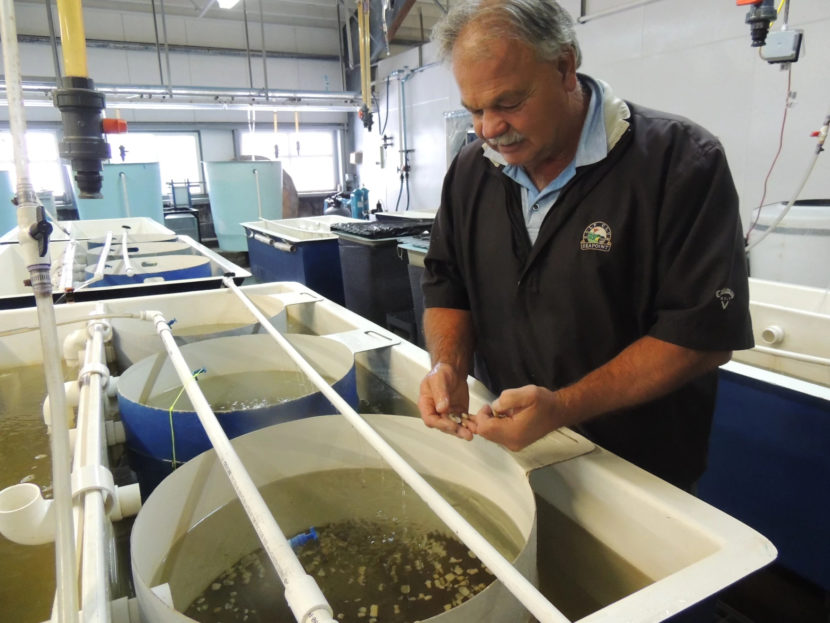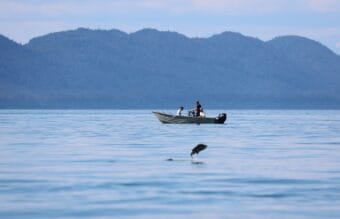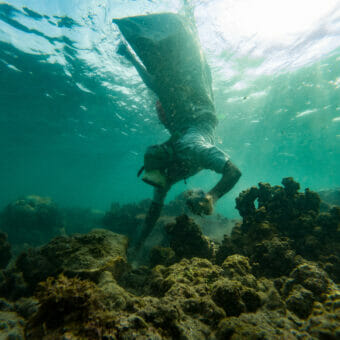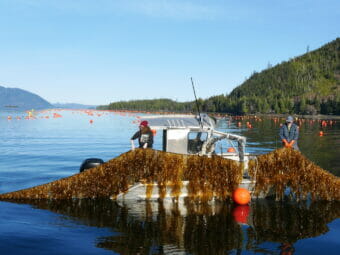
A coalition of Alaska organizations and agencies have won $49 million to grow the state’s mariculture industry over the next five years, the White House announced on Sept. 2.
Mariculture is the farming and enhancement of seaweed and shellfish, and it’s picking up steam in Alaska. While the industry is still somewhat in its infancy, proponents say the state — with its thousands of miles of coastline — has the potential to become a leader in the industry.
The U.S. Department of Commerce believes in that vision, too. The Alaska Mariculture Cluster — a coalition of economic development districts and organizations — was one of 21 recipients of the Build Back Better Regional Challenge grant, funded through the American Rescue Plan Act of 2021. The cluster has five years to spend that money.
“We won’t have much time to bask in the glory of the moment,” said Robert Venables, executive director of Southeast Conference, which led the project. “But we got a lot of work ahead of us, so we’re excited.”
As it stands today, most mariculture in Alaska is concentrated in Southeast Alaska, Kodiak and Prince William Sound.
The scene on the Kenai Peninsula is more varied.
The Alutiiq Pride Marine Institute has been involved in mariculture for three decades, growing saltwater clams and other shellfish stock from its facility on Resurrection Bay.
There are clusters of shellfish and kelp farms on the other side of Kachemak Bay, as well, including 14 active aquatic farm permits between Jakalof Bay, Peterson Bay, Halibut Cove and Bear Cove, according to a map from the Alaska Department of Fish and Game.
Tim Dillon with the Kenai Peninsula Economic Development District, the local lead on the project, said the mariculture cluster has been gathering information from Alaskans in the business to decide where the money is needed most.
The cluster identified eight different projects — including a revolving loan fund, funded at $9.3 million, and a plan to build up mariculture equipment and technology, funded at $15.9 million.
Dillon said he’s excited about the $9.3 million appropriated for workforce development.
“One of the things that we’ve heard is the graying of the fleet from our commercial fishermen,” he said. “Well, this is an opportunity that maybe we can get some newer folks, some younger folks or some people that are dabbling in — OK, if commercial fishing continues with the hardships that they’ve had, is this a way to offset some of that and keep some of these folks involved?”
He said members of the Alaska Mariculture Cluster will be meeting in Ketchikan next week to talk about next steps.
In a Sept. 2 press conference, President Joe Biden said building up a workforce is a key component of the project.
He said the point of the Build Back Better Regional Challenge grants at large is to create local jobs so that workers can find opportunity where they live.
“It’s centered around a vision that as our economy recovers and modernizes, as science and technology accelerate and change the nature of how we manufacture — we want workers and small businesses leading this transition, making sure they’re a part of it,” Biden said.
Commerce Secretary Gina Raimondo said the grants make up the biggest investment the Department of Commerce has made in individual communities, at $1 billion in total funding across 21 projects. She said the mariculture project was one of 529 applications the department received.


